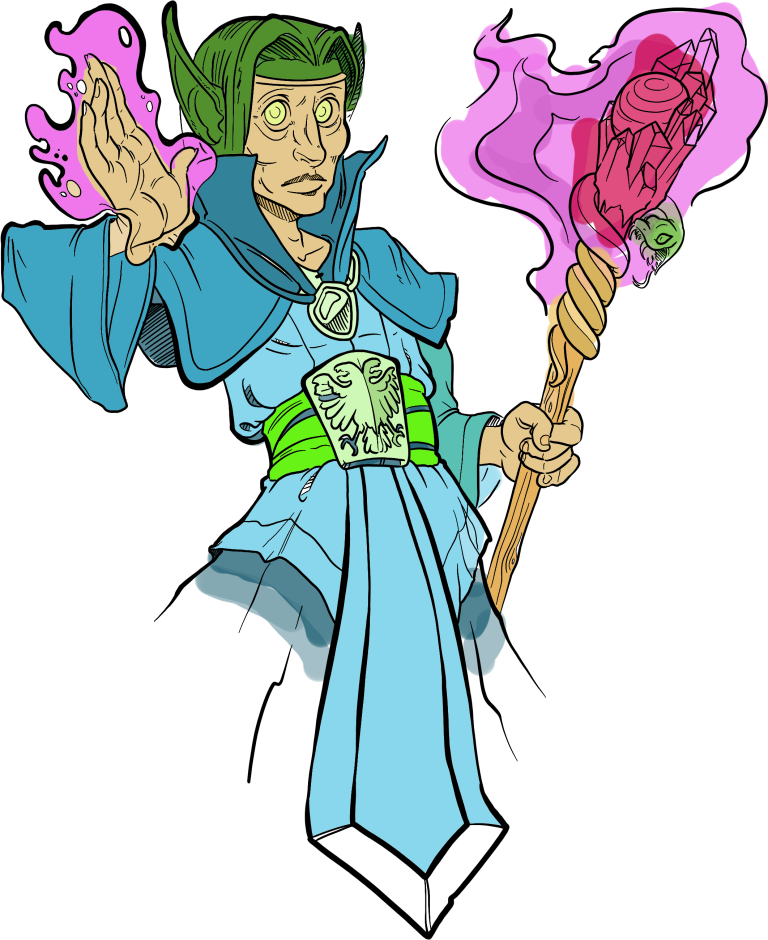By Jason Campbell
The Dungeons & Dragons Players Handbook describes three core pillars of the game; combat, exploration and social encounters. But how does a GM build scenarios that support these pillars? Answering the “Five W” questions (who, what, when, where and why) can help develop each of these encounter types. Let’s try it out!
Combat
This is the most obvious of the three pillars and usually the most common of the three encounter types. Some of the answers are just as obvious.
Who?
The combat involves the PCs and whatever adversary the GM has set up.
What?
It’s combat, so we just need to determine if this is a small-scale or large-scale battle.
When?
Keep this in mind as if it’s outdoors, what time of day would determine the light situation. If the PCs have been traveling a long while without resting, they may be tired.
Where?
The terrain for the battle is an important piece that GMs often overlook. When the battle occurs in a place that the villain is familiar with but the PCs are not, the villain should be prepared and make use of any advantages. If there are 4 adversaries maybe they aren’t standing in the center of the chamber, instead one stands there drawing the PCs attention, while others hide behind objects, spring from the top of a stairway, cling to the ceiling, or other use similar tactics.
Why?
This is the most important answer to prepare. Why would the players care? Why would the PCs enter combat? Make sure to set up a reason that the PCs are in conflict with the villain. More importantly, make sure you’ve provided a reason that the players will find this combat interesting. Maybe the wizard they’ve been hunting is actually a Mummy Lord/wizard. Maybe the dark gnomes blocking the PCs path are fighting using a fire hose they’ve developed.
Exploration
Exploration is a catch-all term for investigating wilderness areas, examining puzzles, surveying a newly discovered area or the like. For some games this might just be the paths between cities, dungeons and other areas of interest. For others exploration might be the main interest. Which way you set it up depends on the preferences of the players.
Who?
This involves the PCs and whatever creatures live in the area being explored. It might be uninhabited and other obstructions present a challenge, like terrain, weather, etc.
What?
This asks what the terrain is like: a mountainside, a dense jungle, a floating cloud, an asteroid field, etc. Consider the area the PCs are directly exploring but also neighboring areas that might have an impact.
When?
Similar to combat, what time of day would determine the light situation. If the PCs have been traveling a long while without resting, they may be tired.
Where?
In a wilderness exploration you will want to think about how far the area is from known civilizations, as this will affect the food and shelter available, and even types of communication. Maybe there are no books and people communicate by using horns and drums.
Why?
The PCs may be exploring an area on the way to another point of interest, but why will the players be interested? You can increase interest by adding fantastic elements to the area. Maybe there are storms of fire, or living mountains, or time shifting portals in teh trees.
Social Encounter
Who?
This is key to a social encounter, who are the PCs interacting with? A creature from the underdark, city officials, the matron of a forest kingdom? Whoever the other person(s) are, make sure you decide what their goals are ahead of time. Knowing what the NPC wants out of the situation will make it easier how they react to the PC’s words and actions.
What?
Decide the type of encounter you expect to have. Is this a debate in the city council? An argument in a tavern? A negotiation with a merchant?
When?
The time of day the encounter takes place will influence the reactions of the participants. Does this happen 5 minutes before the merchant closes up shop for the day? The merchant may rush them through. Does the debate involve the defense of the city, while the attackers arrive tomorrow?
Where?
Decide where the encounter takes place and note a few interesting details. Maybe the roof of the shop leaks. Maybe the tavern is in a dangerous part of town.
Why?
Here’s where some big decisions will be made. Why would the PCs seek out the NPCs? Maybe the NPCs confronted the PCs in the street, or at their own lair. Think about the type of players you have in your game, what do they like to see in their ttrpg sessions? You can generate interest by leaning into things that your players like. If they enjoy debates, set up a conflict with the NPC that they can settle by winning an argument. If they enjoy getting deep into their character, think about having multiple NPCs who disagree and let the PCs determine their place in the discussion.
What do you think? When you create encounters do you have a set of questions you like to answer? Let us know in the comments below





